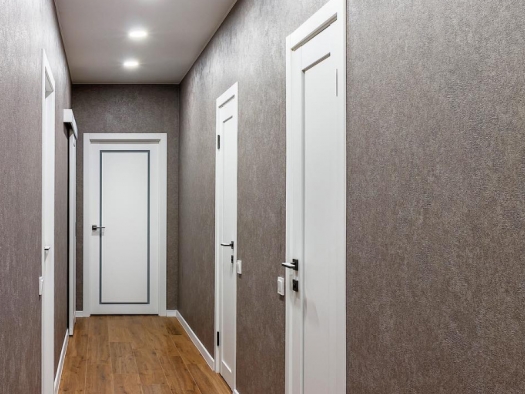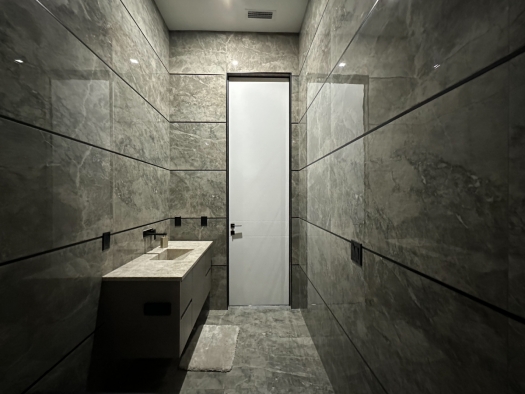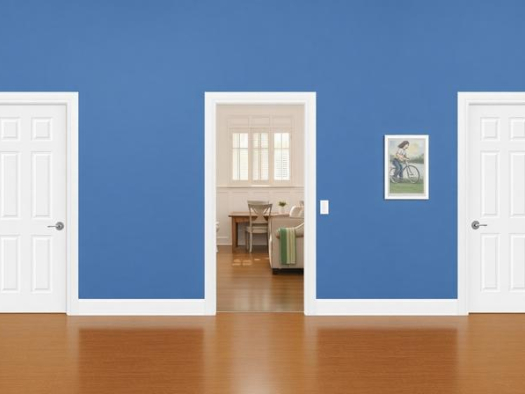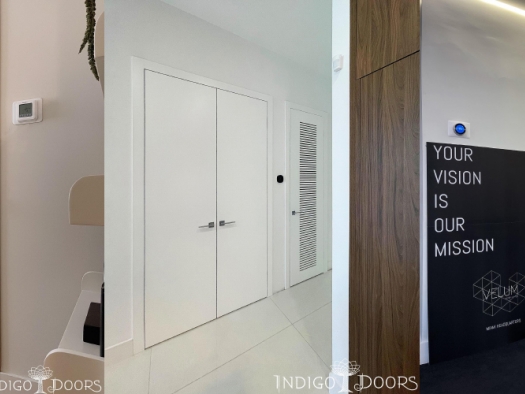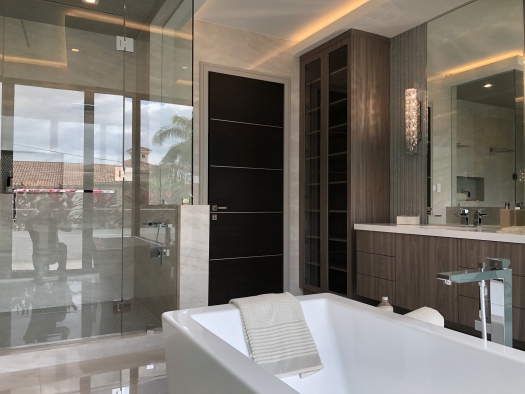- Types of finish for interior doors offered by Indigo Doors
- Main Types of Finishes: Overview of Classic and Modern Options
- Wood Finishes: Natural Beauty and Warmth of the Material
- Varnishing and Veneering: Benefits and Usage Features
- Melamine Coatings: Practicality and Resistance to External Factors
- Painting: Customization Opportunities and Color Scheme Changes
- Laminate and Plastic: Modern and Durable Materials for Door Finishing
- Glass and Mirrors: Ideas for Using Non-Standard Materials for Finishing
- Styling for Classic: Choosing Finishes Corresponding to Traditional Interiors
- Minimalism and Modernity: Finishing for Doors in Contemporary and Ultra-Contemporary Styles
- Textile Upholstery: Coziness and Softness in the Interior with Textile Finishes
- Combined Options: Using Multiple Types of Finishes to Create a Unique Style
- Conclusion: Embodiment of Style through Interior Door Finishes
The finish of interior doors plays a significant role in shaping the overall impression of a room's interior. It serves not only as a functional element, protecting door surfaces from external factors, but also as a key aspect in creating the style and atmosphere of the space.
Selecting the appropriate finish for doors depends on various factors, including the overall interior style, personal preferences, and functional requirements.
The finish of doors holds immense importance for the overall visual perception of the interior. Color, texture, and finishing elements can significantly alter the appearance of a space, imparting a particular atmosphere and character to it. Properly chosen finishes help seamlessly integrate doors into the overall interior style, making it complete and expressive.
Types of finish for interior doors offered by Indigo Doors
In addition to the main types of finishes such as wood finishes, varnishing, painting, and laminate usage, there are other options available that can give doors a special character and style.

Wood Veneer
Wood veneer is a thin layer of natural wood applied to the surface of the door to give it a natural texture and shade. It possesses wonderful decorative properties while preserving the natural beauty and warmth of wood. Wood veneer allows creating an impression of naturalness and luxury, emphasizing the uniqueness of the interior. Additionally, this material is environmentally friendly and durable.
Eco Veneer
Eco veneer is an environmentally friendly alternative to wood veneer, made from natural materials such as cellulose, paper, or fabric, with an imitation of the texture and color of natural wood. It offers a wide range of decorative solutions and color options while maintaining an attractive appearance and ecological purity. Eco veneer is ideal for people who appreciate natural materials and care about the environment.
Enamel
Enamel is a special coating that creates a smooth and shiny surface on the door. It has high resistance to wear, moisture, and UV radiation, making it an ideal choice for high-traffic areas. Enamel offers a wide range of color solutions, from classic to bright and bold shades, allowing for the creation of interesting and original interiors. Thanks to its gloss and smoothness, enamel gives doors an exquisite and modern look, emphasizing their style and elegance.
Main Types of Finishes: Overview of Classic and Modern Options
When choosing finishes for interior doors, it is necessary to consider both aesthetic and functional aspects. Among the main types of finishes, classic and modern options stand out. Classic finishes such as wood and varnish possess traditional charm and elegance, while modern materials like laminate and glass offer a contemporary look and practicality.
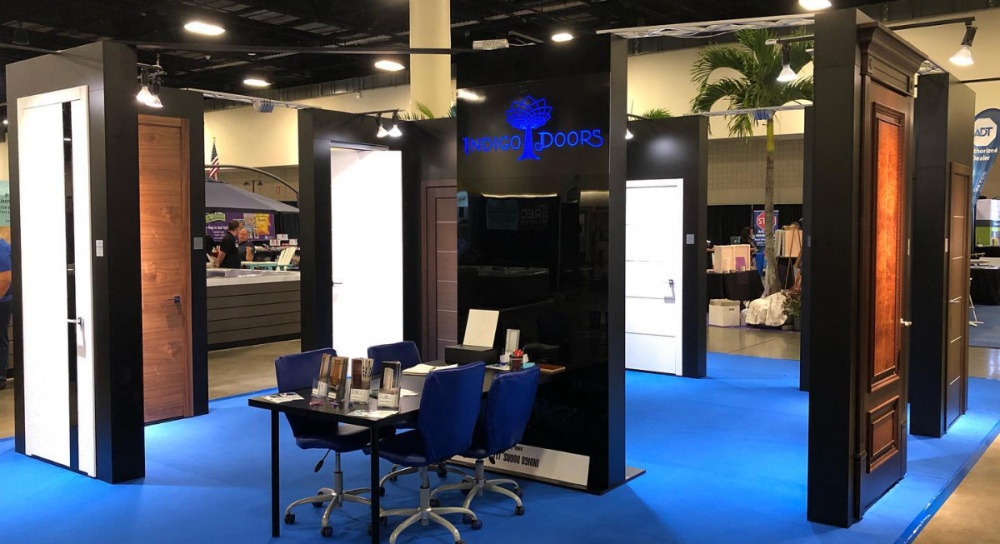
Wood finishes for doors embody the natural beauty and warmth of the material. They are suitable for various interior styles, from classic to country, due to their versatility and compatibility with other decor elements. Wooden doors can be either in their natural color, accentuating the natural texture of the wood, or painted in various shades to match the overall color scheme of the room.
Main Types of Finishes for interior doors:
- Wood Finishes
- Varnishing and veneering
- Melamine coatings
- Painting
- Laminate and plastic
- Glass and mirrors
Wood Finishes: Natural Beauty and Warmth of the Material
Wood finishes for doors offer a wide range of wood types, each with its unique characteristics and texture. Oak, ash, mahogany - each type possesses its own special allure and aesthetic qualities. The choice of a specific wood type depends on the owner's preferences, overall interior style, and budget.
One of the main advantages of wooden finishes is their natural beauty and warmth of the material. Wood creates a cozy and subdued atmosphere in a room, imparting it with a unique charm. Thanks to the variety of shades and textures, wooden doors can be adapted to any interior style, from classic to modern.
Varnishing and Veneering: Benefits and Usage Features
Varnishing and veneering are popular methods of finishing wooden doors, providing them with shine and protection against moisture and wear. Varnish forms a durable protective layer on the surface of the wood, preventing damage and preserving the natural beauty of the material for years to come. Veneer is a thin layer of natural wood applied to the surface of the door, accentuating its texture and adding a special charm.
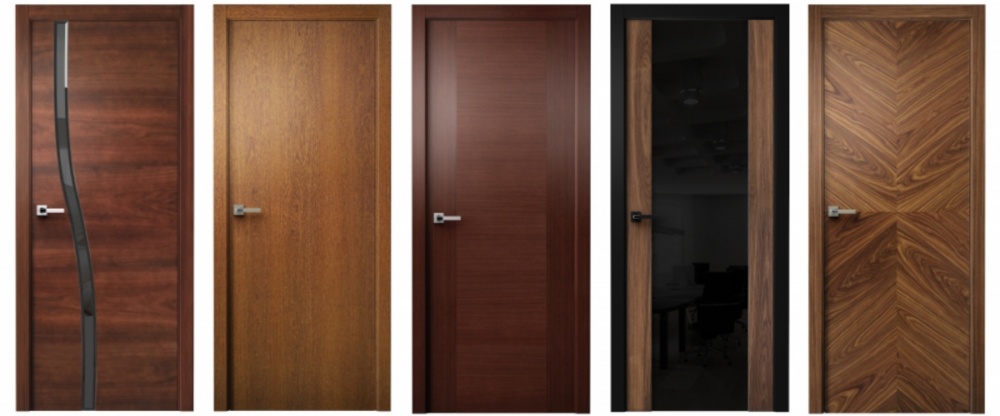
The main advantage of varnishing and veneering is their ability to maintain the original appearance of the wood and protect it from external influences. Varnish has water-repellent properties, making it ideal for use in high-humidity environments such as bathrooms and kitchens. Veneering, in turn, adds elegance and luxury to doors, emphasizing the natural beauty of the wood.
Melamine Coatings: Practicality and Resistance to External Factors
Melamine coatings represent a popular and practical option for finishing interior doors, boasting high resistance to external influences and ease of maintenance. This material consists of synthetic resin applied to medium-density fiberboard or particleboard. Melamine coatings are available in a wide range of colors and textures, allowing for the selection of an option that perfectly complements the overall interior style.
The main advantage of melamine coatings is their durability and resistance to mechanical damage, scratches, and moisture. This makes them an ideal choice for use in high-traffic areas such as hallways or entryways. Thanks to their ease of maintenance, melamine doors are easily cleaned and long-lasting in use.
Painting: Customization Opportunities and Color Scheme Changes
Painting doors is one of the most common methods of finishing, providing extensive opportunities for customization and changing the color scheme of the interior. By using special paints and varnishes, virtually any color and shade can be created, meeting the individual preferences of the owner. This allows for adapting doors to various interior styles and creating a unique look for the space.
Painting doors is also an excellent way to refresh the interior and give it a new life without the need to replace door structures. Thanks to the wide selection of colors and shades, doors can be easily matched to the existing room design or create a contrasting accent that stands out against the overall interior. Additionally, painting provides additional protection to the door surface against moisture, scratches, and ultraviolet radiation.

Laminate and Plastic: Modern and Durable Materials for Door Finishing
Laminate and plastic are modern materials widely used for finishing interior doors due to their strength, moisture resistance, and variety of design solutions. Laminated doors are made by applying a special laminate layer to the surface of a wooden base, making them sturdy and long-lasting.
One of the main advantages of laminate and plastic finishes is their resistance to wet conditions, making them an ideal choice for use in bathrooms and kitchens. Thanks to modern technologies, laminate and plastic can mimic various types of wood, stone, metal, and other materials, allowing for the creation of original and stylish interiors.
Glass and Mirrors: Ideas for Using Non-Standard Materials for Finishing
Using glass and mirrors for finishing interior doors adds lightness, spaciousness, and a sense of airiness to the interior. Glass doors can be transparent, frosted, or with decorative elements such as engraving or sandblasted patterns. They visually divide the space of the room while maintaining its natural light and openness.
Mirrored doors are also a popular choice for creating stylish and functional interiors. They visually expand the space of the room by reflecting light and creating a sense of depth. Additionally, mirrored doors provide the opportunity to use them as functional interior elements, for example, in wardrobes or bathrooms. (Please read the article 'Interroom doors with mirrors and glass - functionality and style in your interior')
Styling for Classic: Choosing Finishes Corresponding to Traditional Interiors
When styling doors for a classic interior, it's important to choose finishes that emphasize its elegance and sophistication. Wooden finishes such as veneering or varnishing are ideal for this purpose, giving the doors a refined and luxurious look. When selecting finishes for classic interiors, preference is given to warm and subdued shades of wood that harmonize with the overall room style. It's also important to consider decorative elements such as carved patterns or moldings, which can add extra charm and sophistication to the doors.
Laminated doors with wood or other natural material imitations are also suitable for creating a classic style. It's essential to choose coatings with a texture that gives them an authentic appearance, as well as to select hardware in the style of antique furniture to complement the overall look of the doors.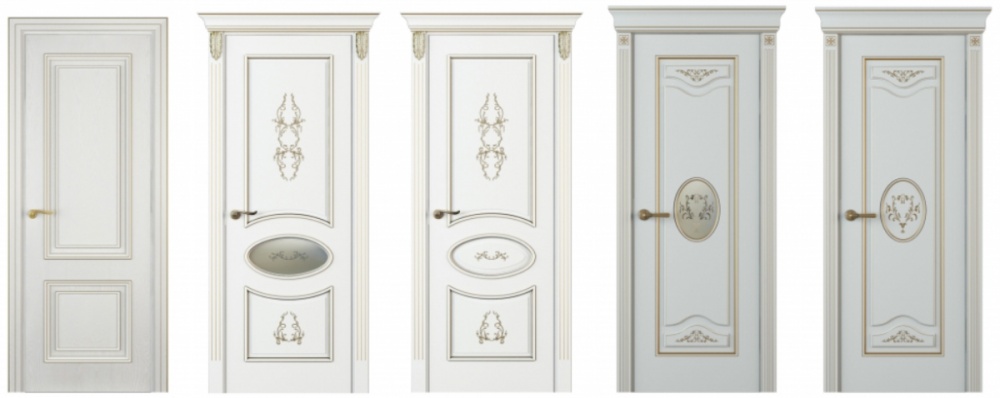
Minimalism and Modernity: Finishing for Doors in Contemporary and Ultra-Contemporary Styles
Modern interiors are characterized by clean lines, minimalist design, and the use of contemporary materials. For finishing doors in such interiors, sleek and simple solutions are often chosen. Laminate doors with glossy or matte finishes are perfect for modern spaces, giving them a modern and stylish appearance.
An important aspect of finishing for modern interiors is the choice of color palette. Neutral shades such as white, gray, or black are often used, creating an atmosphere of calmness and harmony. Bright and vibrant colors are also popular, adding dynamism and individuality to the interior.
Textile Upholstery: Coziness and Softness in the Interior with Textile Finishes
Textile upholstery on doors adds coziness and softness to the interior, creating an atmosphere of comfort and warmth. This type of finish is often used in bedrooms, living rooms, or offices where it's important to create an atmosphere of relaxation and privacy. Textile upholstery can be made from various materials such as velvet, chenille, linen fabric, or faux leather, allowing for options that match the overall interior style.
One of the advantages of textile upholstery is its soundproofing properties, which help reduce noise levels in the room and create comfortable conditions for relaxation and work. Additionally, textile upholstery is easy to maintain and can be easily cleaned from dust and dirt using a vacuum cleaner or soft brush.
Combined Options: Using Multiple Types of Finishes to Create a Unique Style
To create a unique and expressive interior, combined options for door finishing can be used. This allows for combining different materials, textures, and colors to create an original look for the space. For example, doors can be made with wooden inserts, covered with ceramic tiles, or glass, adding dynamics and individuality to the interior.
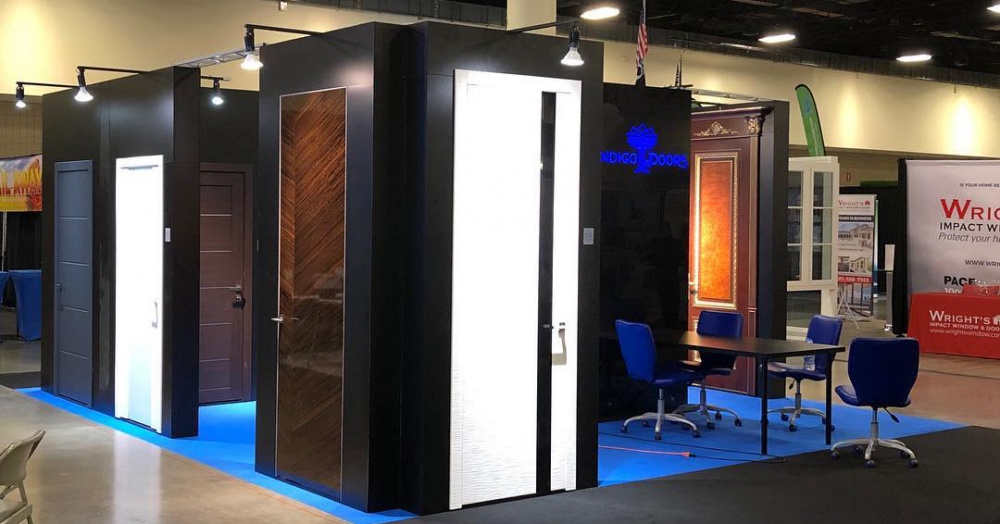
Combined finishing options also allow highlighting certain architectural details of the room or creating accent zones in the interior. For instance, one can choose doors with wooden frames and glass inserts to emphasize a loft style or use wooden doors with metallic decorative elements to create an industrial look for the space. The possibilities of combined finishing options allow for realizing the boldest design ideas and creating an interior that reflects the individuality and character of its owner.
Conclusion: Embodiment of Style through Interior Door Finishes
The finishing of interior doors plays a key role in creating the style and atmosphere of an interior. The variety of materials and textures allows for choosing the optimal solution that corresponds to both traditional and modern design preferences. During the selection of finishes, it's important to consider not only aesthetic aspects but also the functional characteristics of materials, their resistance to external influences, and ease of maintenance.
Wood finishes bring natural beauty and warmth to the interior, while varnishing and veneering add an exquisite look to the doors. Melamine coatings provide practicality and resistance to damage, while painting opens up wide opportunities for customizing the color palette. Laminate and plastic represent modern and durable materials, while glass and mirrors add lightness and spaciousness to the interior.
The choice of finishes for doors depends on individual preferences, the overall interior style, and functional requirements. Thanks to the wide range of materials and design solutions, everyone can find the optimal solution that reflects their taste and character. Combining different types of finishes allows for creating unique interiors that reflect the individuality and style of their owners. Ultimately, the finishing of interior doors is an important element in creating a harmonious and cozy space that reflects the personality and character of the occupants.


